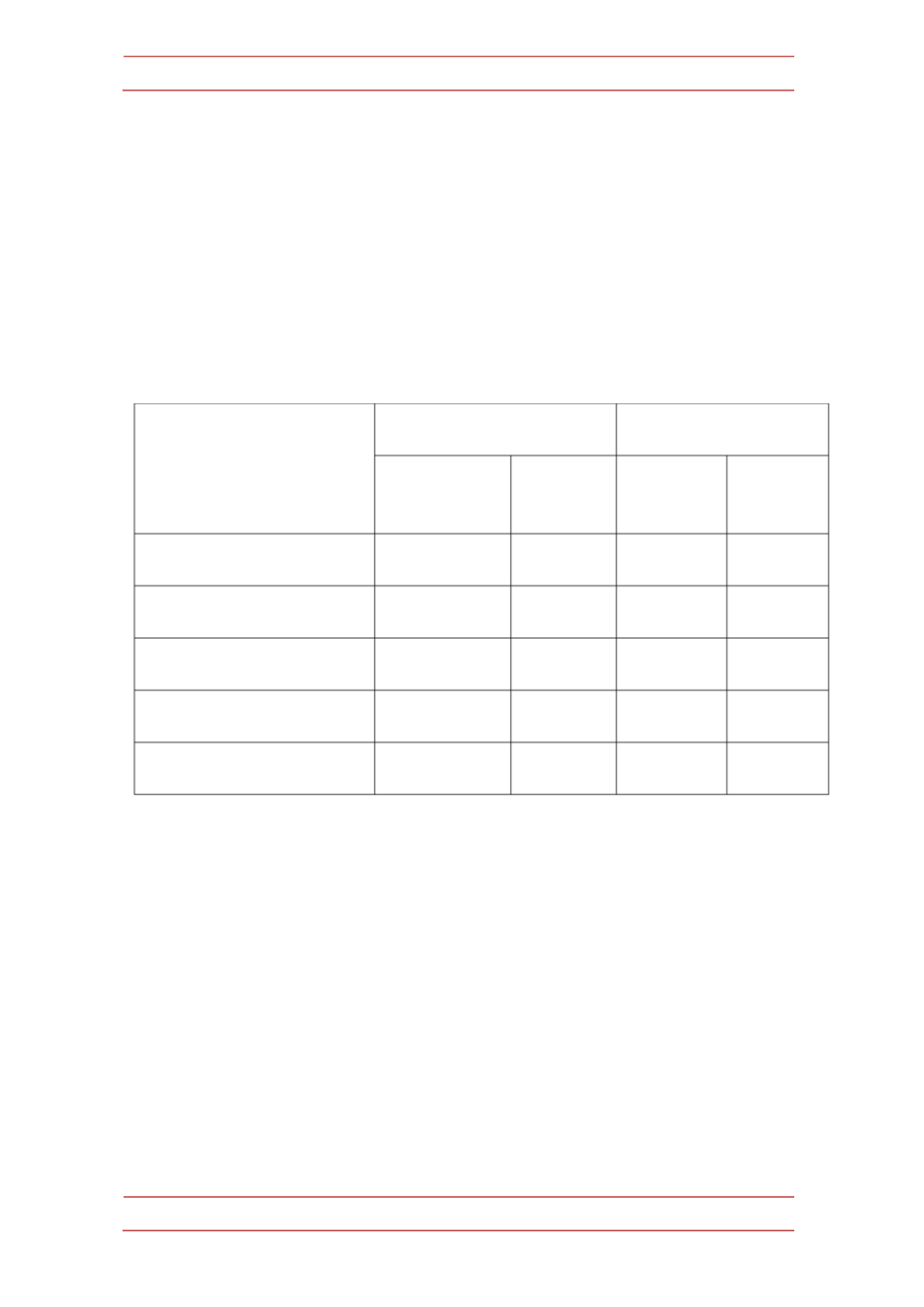
M. MALIK & col
506
Out of 600 encounters, correct anti-‐malarial drugs were prescribed in 11 %
(n= 66) of the cases, correct dose of anti-‐malarial drugs used were given in 10.1 %
(n= 61) of the cases while correct strength of anti-‐malarial drugs used was
prescribed in 9 % (n= 54), correct frequency of the drugs used in 9.2 % (n= 55)
and correct duration of drugs used in 9 % (n= 54) of the cases respectively.
A detail description of prescriptions prescribed according to malaria STGs
in public and private healthcare facilities in the two cities is given in (Table 4).
Table 4.-‐
Adherence of prescriptions with standard treatment guidelines for malaria in public and
private tertiary healthcare facilities in the two cities.
No significant difference (p ≤ 0.05) was observed among adherence of
prescriptions with standard treatment regimen for malaria in public and private
healthcare facilities in the two cities (Table 5).
No significant difference (p ≤ 0.05) was observed among adherence of
prescribers having different designations and levels of experience with standard
treatment regimen for malaria (Table 6).
Indicator
Islamabad (n = 300)
Prescriptions
Rawalpindi (n = 300)
Prescriptions
Public
n= 150
F (%)
Private
n= 150
F (%)
Public
n= 150
F (%)
Private
n= 150
F (%)
Correct anti-malarial drug
prescribed
13 (8.6 %)
23 (15.3 %)
19 (12.6 %)
11 (7.3 %)
Correct dose of anti-malarial
drugs prescribed
11 (7.3 %)
20 (13.3 %)
19 (12.6 %)
11 (7.3 %)
Correct strength of anti-
malarial drugs prescribed
5 (3.3 %)
19 (12.6 %)
19 (12.6 %)
11 (7.3 %)
Correct frequency of anti-
malarial drugs prescribed
8 (5.3%)
17 (11.3 %)
19 (12.6 %)
11 (7.3 %)
Correct duration of anti-
malarial drugs prescribed
7 (4.6%)
17 (11.3 %)
19 (12.6 %)
11 (7.3 %)


